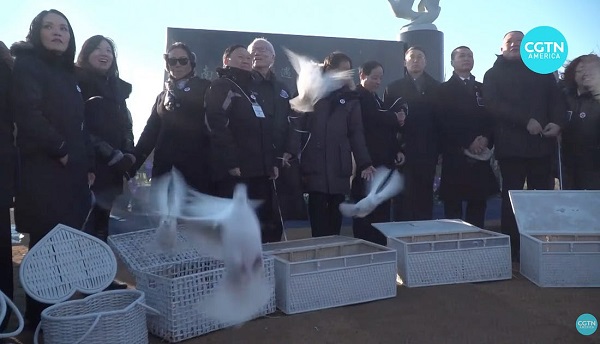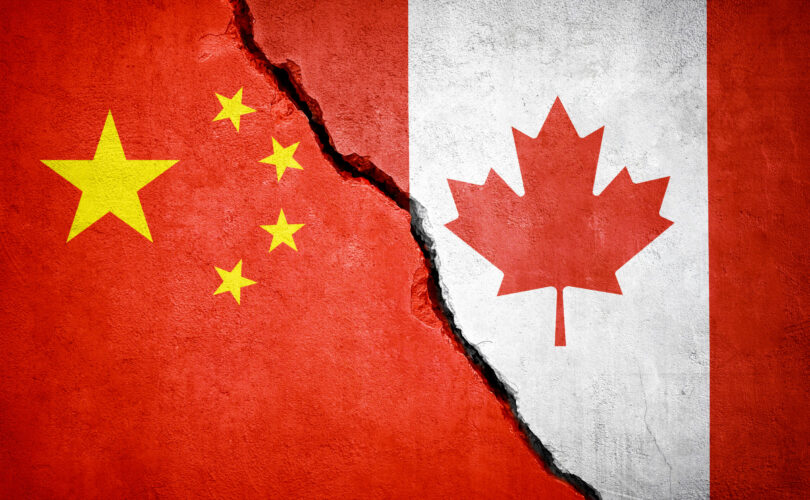Opinion
Jason “Bumbles” Kenney bumbled again. Will he ever learn or say sorry?

April 2 2015 this article from the National Post came out;
Jason Kenney has long been considered the Conservative party’s best approximation of an heir apparent; a dauphin, if you will. In a caucus notably lacking in strong performers, save for the Prime Minister and a handful of ministers, Mr. Kenney is a star.
Or was.
For it has been reinforced lately, most recently Wednesday, that this minister has a potentially crippling Achilles heel; his very confidence and combativeness, coupled with instant access to social media, lead him to one snafu after another. Making matters worse, having erred, Mr. Kenney is incapable of apology. The words “I’m sorry” apparently cannot pass his lips without causing him to spontaneously combust. In this, the Defence Minister neatly personifies what ails his party as it heads into a make-or-break election; a clench-jawed refusal to admit error or consider fair criticism until the last grainery has been burned, the last well salted and the last bridge bombed.
That was in 2015, now in 2021 it appears nothing has changed.
Last week Ontario’s Finance Minister was stripped of his position when the media disclosed he was in the Caribbean over Christmas. Alberta’s Premier, once referred to in Ottawa as Mr. Bumbles, looked at his government and many Cabinet Ministers, Senior Staff and MLAs including Red Deer South’s Jason Stefan was in fact also out of the country.
Unfortunately Ontario’s Premier Ford only had 1 member lacking the moral compass to stay home, Mr. Bumbles had many.
The Minister in charge of rolling out the vaccine was in Hawaii, coincidentally our vaccine roll out was one of the slowest in Canada. Our bumbling Premier offered;”We weren’t expecting the vaccine til January” so it is Trudeau’s fault that we got vaccines early. He went on to brag that starting now, we are vaccinating 3,000 people per day. With a population of 4.5 million that means we will all be vacinated in 1500 days or about 4 years.
Mr. Kenney still bumbles along, with denials, blaming others, doubling down and refusing to take responsibility or to apologize.
He says he never directed them directly, not to travel even though it has been on the government website.
Some may offer that the Premier is a hands off Premier, more in it for the prestige and photo ops, but his party UCP should get off their high horses and live with all us common folks. You know the ones you warned could be fined $1,000 if we go to Grandma’s house. Does UCP stand for Upper Crust Party? It fits.
Mr. Premier if you want to distance yourself from the moniker; “Mr. Bumbles”. Do something, Take action. Take control of your government.
I remember when Former Premier Prentice and Wildrose Leader Danielle Smith were seen as “too smart by half”. They lost.
Will you last through any more Bumbles? I would try to do your job. Just saying.

Digital ID
The Global Push for Government Mandated Digital IDs And Why You Should Worry

From StosselTV
Countries all over the world are imposing digital IDs. They tie your identity to everything you do. Spain’s Prime Minister wants “An end to anonymity online!”
Tech privacy expert Naomi Brockwell @NaomiBrockwellTV warns that’s dangerous. “Privacy is not about hiding,” she tells Stossel TV producer Kristin Tokarev. “It’s about an individual’s right to decide for themselves who gets access to their data. A Digital ID… will strip individuals of that choice.”
The new government mandated digital IDs aren’t just a digital version of your driver’s license or passport. “It connects everything,” Brockwell explains. “Your financial decisions, to your social media posts, your likes, the things that you’re watching, places that you’re going… Everything you say will be tied back to who you are.”
And once everything runs through a single government ID, access to services becomes something you need permission for. That’s already a reality in China where citizens are tracked, scored, and punished for “bad” behavior.
Brockwell warns the western world is “skyrocketing in that direction.” She says Americans need to push back now.
———
To make sure you receive the weekly video from Stossel TV, sign up here: https://www.johnstossel.com/#subscrib...
———
International
China Stages Massive Live-Fire Encirclement Drill Around Taiwan as Washington and Japan Fortify

Taiwan says 89 Chinese military aircraft and 28 PLA Navy and coast guard vessels surged into the island’s air and maritime approaches.
Following massive military sales from Washington to Taiwan and rapidly scaled defensive preparations from Japan, Beijing on Monday launched a sweeping show-of-force including live-fire activity around Taiwan.
The encirclement-style operation brought 89 Chinese military aircraft and 28 PLA Navy and coast guard vessels into the waters and skies around the island, one of the heaviest single-day tallies reported in more than a year.
Taiwan’s Presidential Office condemned the operation as a “unilateral provocation” that destabilizes regional peace, while stressing that Taiwan’s security agencies had “complete situational awareness” and had made preparations. Taiwan’s Ministry of National Defense said it activated an emergency response posture and conducted immediate readiness drills.
Beijing, for its part, framed the action as a warning—an operation the PLA’s Eastern Theater Command dubbed “Justice Mission 2025,” involving the army, navy, air force, and rocket force, with designated zones for live-fire activity and sea-and-airspace restrictions.
Global coverage described the drills as rehearsing the mechanics of isolation: blockade-style pressure against key approaches and ports, integrated sea-air patrols, and “deterrence” aimed at what the PLA calls “external interference.”
In a statement circulated by former Taiwanese foreign minister Joseph Wu, now head of the nation’s national security council, the message from Taipei was readiness to deploy force.
“As China ramps up military threats against Taiwan, our armed forces are conducting Rapid Response Exercises in response,” Wu stated Monday morning. “We remain resolute and unafraid. We’ll defend our sovereignty and democracy at all times.”
Across international coverage, analysts assessed Beijing’s actions as escalation through rehearsal, designed to demonstrate a capacity to encircle Taiwan, with live-fire elements and disruption to regional routes. Coverage also emphasized the “stern warning” language aimed at “Taiwan independence” forces and foreign actors, and Taiwan’s elevated alert posture.
The choreography of this operation matters as much as the raw numbers.
The PLA appears to be practicing the operational geometry of denying outside forces access—the kind of posture meant to complicate U.S. and allied intervention in a blockade or assault scenario. That emphasis has been widely noted in contemporaneous coverage, including reporting that the Eastern Theater Command’s messaging explicitly framed the drill as “deterrence” against “external interference.”
This helps explain why the drill lands amid a knot of accelerating pressures.
A number of analysts speculated that Washington’s major arms package and Japan’s “re-militarization”—Tokyo’s rapid defense buildup in response to Beijing’s expanding military footprint—now feed into an escalating drill cycle in which China aims to demonstrate that outside support can be deterred, delayed, or priced prohibitively high.
One clear trigger is the Trump administration’s newly announced $11.1 billion arms package for Taiwan, which Beijing cast as proof of U.S. “interference.”
Another is Japan.
Regional reporting and analysis have framed the drill as a warning shot aimed not only at Taipei but at the alliance architecture around it—especially as Japanese leaders and planners speak more openly about a “Taiwan contingency” and expand defense spending and capabilities that Beijing portrays as destabilizing.
A third is the longer arc Beijing itself has helped set.
U.S. officials have repeatedly stated their assessment that Xi Jinping has directed the PLA to be capable of taking Taiwan by force by 2027—a milestone that continues to shape planning assumptions across the region.
In reporting The Bureau gathered during a September 2023 visit to Taiwan, Taiwanese military experts and officials warned that Beijing’s pressure campaign had reached a new plateau: Chinese aircraft and vessels were crossing into—and remaining in—Taiwan’s territory longer, in actions they described as cognitive warfare designed to erode the public’s will to resist.
“China makes many excuses to conduct military exercises around Taiwan, and I don’t think this is only political,” said Dr. Tzu-Chieh Hung of the Institute for National Defense Security Research, a think tank funded by Taiwan’s government. “I think they are expanding the area of their military operations.”
“We think they are trying to create a new normal, when we will become numb to their actions, and make it a fait accompli,” another senior Taiwanese official told The Bureau.
Those warnings sit directly beneath Monday’s encirclement-style operation. Beyond the raw tallies—89 aircraft and 28 PLA Navy and coast guard vessels—Taiwan’s defense community sees a pattern of repeated rehearsals that stretch time, distance, and ambiguity, steadily conditioning the region to accept blockade-style actions as irreversible.
Yet the fatalism that Taiwan cannot be defended has not been the conclusion in major U.S. war-game work—and Washington’s $11-billion Taiwan arms package signals an intent to strengthen deterrence.
Back in 2023, a widely cited wargaming study by the Center for Strategic and International Studies found Taiwan could repel a Chinese invasion—if Taiwan is prepared to fight immediately, and the United States and Japan move fast to deliver overwhelming air and missile firepower against the fleets that would attempt a blockade and landing.
“There is no question, two years ago most people would have said China has the ability to conquer Taiwan in a fait accompli,” Mark Cancian, one of the study’s authors, told The Bureau in 2023. “But we showed that is not true.”
“The Chinese defensive bubble at the start of the war is so strong, that Taiwan needs what it has to fight with for the first month or two,” Cancian said. “And the United States has to participate en masse and quickly. Japan must at least provide base capacity for U.S. forces, and Taiwan must defend itself.”
-

 Digital ID1 day ago
Digital ID1 day agoCanadian government launches trial version of digital ID for certain licenses, permits
-

 Alberta1 day ago
Alberta1 day agoAlberta Next Panel calls to reform how Canada works
-

 Agriculture1 day ago
Agriculture1 day agoEnd Supply Management—For the Sake of Canadian Consumers
-

 International1 day ago
International1 day agoGeorgia county admits illegally certifying 315k ballots in 2020 presidential election
-

 Business1 day ago
Business1 day agoThe “Disruptor-in-Chief” places Canada in the crosshairs
-

 Artificial Intelligence1 day ago
Artificial Intelligence1 day agoUK Police Pilot AI System to Track “Suspicious” Driver Journeys
-

 Energy24 hours ago
Energy24 hours ago‘The electric story is over’
-

 International1 day ago
International1 day agoWorld-leading biochemist debunks evolutionary theory








